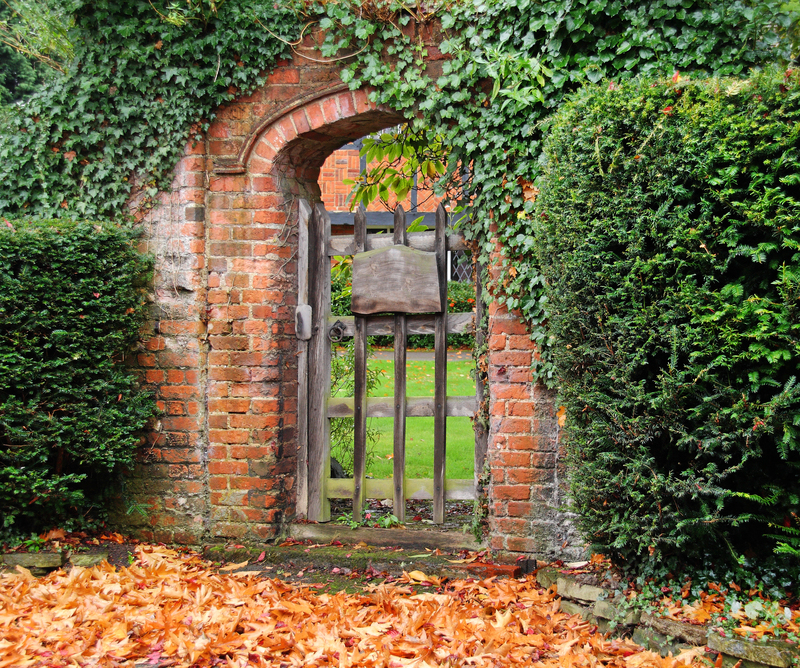Neglected Gardens Brought Back to Life: Where to Start
Posted on 23/06/2025
Neglected Gardens Brought Back to Life: Where to Start
Is your outdoor space a jungle of tangled weeds and forgotten dreams? Don't despair! Even the most neglected garden can bloom again with vision, effort, and a clever plan. Restoring an abandoned or overgrown garden may appear overwhelming, but breaking the process into simple stages makes the project both achievable and rewarding. This comprehensive guide will show you where to start when bringing a neglected garden back to life, offering expert tips, practical steps, and creative inspiration along the way.
Why Restore a Forgotten Garden?
- Boosts Property Value: A thriving, beautiful garden enhances curb appeal and can significantly increase the value of your home.
- Supports Biodiversity: Revived gardens provide essential habitats for birds, bees, and other wildlife.
- Enhances Wellbeing: Gardening is therapeutic. Revitalizing a neglected space brings joy and a sense of accomplishment.
- Creates Usable Outdoor Space: Once restored, your garden becomes an inviting area for relaxation and entertainment.
But where should you begin? Let's take a closer look at the step-by-step approach for restoring neglected gardens and transforming forgotten plots into lush, vibrant oases.

Step 1: Assess the State of Your Neglected Garden
Before diving headfirst into a restoration project, take time to observe and analyze your garden:
- Walk around and take notes: Identify areas with rampant weeds, overgrown shrubs, broken structures, or flooded sections.
- Consider existing features: Look for mature trees, hidden pathways, original borders, or ornamental plants worth saving.
- List problem areas: Poor drainage, compacted soil, or evidence of pests and disease should be addressed early in the process.
Tip: Take photographs throughout the garden - they'll be invaluable as a reference and a reminder of your progress.
Step 2: Develop a Restoration Plan
Breathe deeply - the restoration process happens step by step, not overnight! Thoughtful planning helps to avoid costly mistakes and wasted effort.
Ask Yourself:
- What's your vision? Is the aim a flower-packed paradise, wildlife haven, family play area, or kitchen garden?
- How much time do you have? Maintenance can vary greatly depending on design and plant choice.
- What's your budget? Restoration can be achieved at any price point with creative resourcefulness.
Map Out the Space
- Draw a quick map, noting boundaries, paths, trees, and existing beds. Indicate sun & shade patterns throughout the day - this affects plant selection!
- Plan zones: consider entertaining areas, seating nooks, productive beds, or dedicated wildlife sections.
Pro Tip: If your garden feels particularly daunting, start with manageable sections. "Garden rooms" make the task less overwhelming and let you celebrate small wins along the way.
Step 3: Clear the Garden--The Essential Clean Slate
This step is transformative. Bringing abandoned gardens back to life begins with removing the clutter of neglect. Roll up your sleeves and follow these guidelines:
- Remove debris: Gather and dispose of broken pots, rusted furniture, litter, and any hazardous materials.
- Tackle the weeds: Use a hand fork, hoe, or appropriate herbicide to clear out stubborn weeds. For large plots, consider calling in help for the initial sweep.
- Prune back overgrown shrubs and trees: Remove dead or diseased branches. Shape unruly growth to allow light and air to reach the soil and remaining plants.
- Mow or strim: Long grass and brambles can conceal the layout. Give the area a cut to visualize the underlying structure.
- Compost waste if possible: Green waste can be a valuable resource when properly processed.
Remember: Always wear gloves and protective clothing. You may encounter thorns, nettles, or hidden hazards in a neglected yard.
Step 4: Restore Soil Health
The foundation of a flourishing garden is healthy, nutrient-rich soil. Years of neglect often mean compaction, poor fertility, or contamination. Here's how to rejuvenate your soil:
- Test your soil: Kits are inexpensive and will reveal pH and nutrient levels. Knowing your soil type shapes future planting choices.
- Aerate and dig: Use a fork to break up compacted ground. For especially tough areas, double-dig or consider temporary raised beds.
- Add organic matter: Well-rotted manure, compost, or leaf mold feeds the soil and improves its structure.
- Treat problem areas: If you discover signs of contamination (oily patches, strange smells), seek expert advice--remediation may be needed before planting edible crops.
The more effort you put into your soil at this stage, the easier restoring your neglected backyard garden will become.
Step 5: Save Mature Plants Where Possible
Within the overgrowth, you might find hidden treasures. Mature shrubs, trees, or perennials can be the backbone of your revived garden.
- Prune dead wood and shape overgrown specimens carefully.
- Mulch around roots to retain moisture and suppress new weeds.
- If uncertain about plant ID, consult gardening forums or local experts - you might save rare or especially valuable types.
Key point: Healthy, established plants are expensive and time-consuming to replace. Preserve what you can - they add instant structure and maturity to the new landscape.
Step 6: Plan and Plant with Purpose
Now for the creative part! Reviving an old or neglected garden offers the perfect opportunity to create a space that suits your needs and style.
Steps to Replanting Success:
- Start with structure: Place new hedges, trees, or large shrubs first. These form the backbone and define paths or zones.
- Add beds and borders: Build up layers with perennials, groundcovers, and seasonal color.
- Choose resilient plants: Opt for varieties suited to your soil, climate, and light levels. Native species are often more robust and wildlife-friendly.
- Mulch and water: Apply bark, straw, or compost mulch to suppress weeds, improve moisture retention, and nurture young plants.
- Don't rush: Take time to watch how the sunlight shifts and areas evolve throughout the seasons. It's perfectly fine to add plants gradually as your vision develops.
Remember: Small steps forward each weekend are more sustainable than a massive overhaul that leaves you burnt out. Enjoy the creative journey!
Step 7: Restore Structures and Hard Landscaping
Pathways, patios, seating, and fences are often overlooked when discussing garden restoration. Don't forget these vital elements:
- Repair or replace broken items: Benches, arbors, and trellises add charm and utility--give them a new lease on life.
- Safe and accessible paths: Clear old paving of moss and weeds, re-lay loose stones, or install new gravel walkways.
- Enhance with features: Birdbaths, raised beds, compost bins, and water features can be installed gradually.
- Paint or stain woodwork: A fresh coat of paint or preservative protects and refreshes fences and sheds.
Well-maintained hardscaping not only improves function but also frames your garden's new plantings beautifully.
Step 8: Nurture & Maintain - The Ongoing Transformation
You've done the hard work--now keep your revitalized garden thriving!
- Regular weeding: Little and often prevents your plot from falling back into chaos.
- Water wisely: New plantings need consistent moisture. Early mornings are best for watering.
- Feed and mulch: Top up organic matter as needed, especially during the growing season.
- Monitor for pests and diseases: Catching problems early makes them easier to manage naturally.
- Celebrate successes: Take pride in every new shoot, flower, or butterfly that visits. Share your progress with friends, family, or on social media--you might inspire others to tackle forgotten spaces!
Creative Ideas for Bringing Neglected Gardens Back to Life
- Wildlife-Friendly Zones: Plant nectar-rich flowers, install bird boxes, or create a log pile to attract beneficial creatures.
- Reclaimed Features: Use salvaged bricks, pallet wood, or upcycled containers for quirky, low-cost beds and borders.
- Edible Gardens: Mix herbs, fruit, and vegetables with ornamentals for beauty and bounty combined.
- Secret Corners: Add a bench beneath an arching tree, hidden from view for peaceful retreat.
The beauty of reviving overgrown gardens lies in blending the existing with your personal touch. Unexpected treasures often emerge from tackling forgotten corners with imagination and patience.
Common Pitfalls - and How to Avoid Them
- Doing too much, too fast: It's tempting to rip out everything at once, but haste can destroy valuable plants and soil.
- Ignoring the soil: All gardens depend on good ground. Invest here for long-term success.
- Unrealistic ambitions: Large scale projects need time, patience, and sometimes professional help. Start small!
- Neglecting maintenance: Schedule regular gardening sessions to avoid repeating the cycle of neglect.

FAQ: Neglected Gardens Brought Back to Life
- How long does it take to restore a neglected garden?
The timeline depends on size and level of overgrowth, but most gardens take a season or more for full transformation. Celebrate small milestones along the way! - What's the best month to start garden restoration?
Early spring or autumn are ideal for major clearance and planting, but garden rejuvenation can start anytime except during severe weather. - Should I use weed killers?
Manual removal and mulching are best for the environment. Herbicides may be used judiciously for stubborn infestations, but always follow directions to protect wildlife and soil health. - Can an old concrete patio be reused?
Absolutely! Clean and refresh with power washing, or repurpose slabs as stepping stones or new seating areas.
Conclusion: Every Garden Deserves a Second Chance
Bringing a neglected garden back to life is a journey of patience, planning, and creativity. Whether you're reclaiming a wild tangle, reviving an old family plot, or transforming an abandoned backyard, the steps remain the same: clear the ground, restore the soil, preserve what's valuable, plan and plant with care, and maintain with love.
Start small, stay consistent, and enjoy the transformation - your revived garden will soon be a living testament to resilience and renewal.
Ready to get started? Grab your gloves, gather your tools, and turn your neglected outdoor space into a thriving sanctuary once more. Future you--and all the creatures that visit--will thank you!
```
